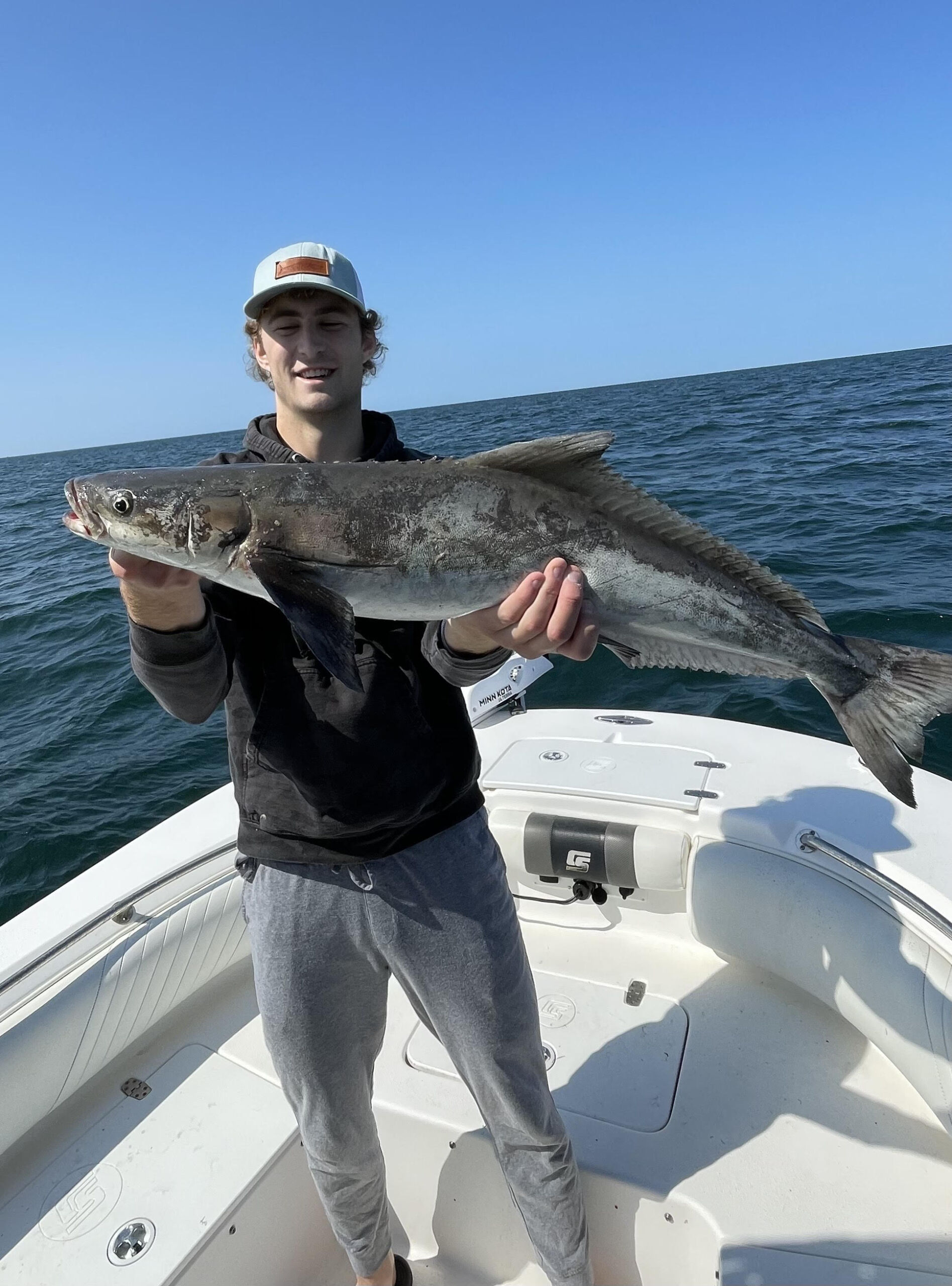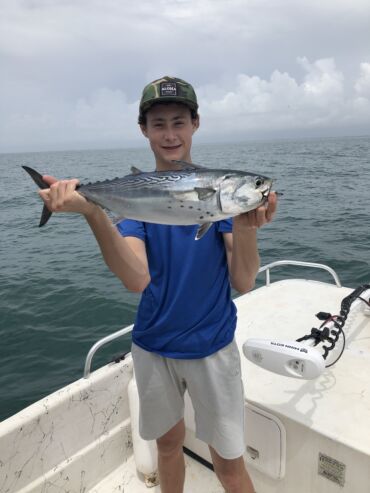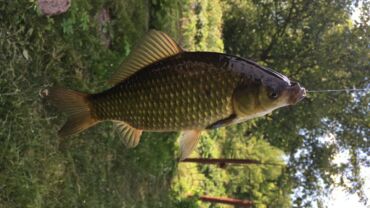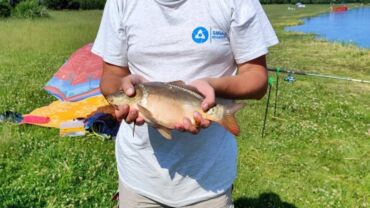Tasmania is an island located just 240 km from the mainland of Australia. As one of the most southern land-based fishing locations in Australia, the Southern Ocean brings with it a variety of unique fishing opportunities that can be both extremely challenging and rewarding. Unlike the deserts and outback of mainland Australia, Tasmania offers a variety of excellent freshwater and saltwater fishing opportunities for anglers.
It doesn’t matter if you like fly fishing for Trout or Salmon or cruising the ocean chasing after Bluefin Tuna, Yellowfin Tuna, or Albacore. The diverse range of fishing opportunities in Tasmania caters to all anglers.
In the following guide to fishing Tasmania, we’ll cover:
If you enjoy catching game fish from the shore, then check out Land-Based Shark Fishing: Tips and Tricks to Catch Bigger Sharks from the Beach to learn more about catching sharks from the beach!
While discovering a fishing spot in Tasmania is simple due to the abundance of locations, finding the best spots, especially the local secrets, can be challenging. Without some local knowledge, you’re up against the odds.
However, thanks to the Fishbox App, a premium Fishing Forecasting App, you’ll know the perfect time to plan your destination fishing trip to Tasmania, including when your target species is most active and outstanding local hotspots.
Get your personalized fishing map
Answer a quick quiz and get your own personalized fishing map
Expert Opinion on Fishing in Tasmania, Australia

Pierce Latta
16 years fishing experience
“Never in a million years did I think I would be writing about fishing in Tasmania, Australia but here we are. It is also important to note that never in a million years would I have ever considered going to Tasmania to fish until after reading this awesome article. The article starts by instantly hooking the readers with all the different fishing options that are available in Tasmania such as fly fishing, inshore, and even deep-sea fishing. As an angler who loves to mix it up every so often, I loved this addition in the article as it creates even more draw to the location in question. The article dives straight into the meat of its content talking about saltwater fishing in Tasmania and the many opportunities it presents in terms of species by listing a variety that both put up a great fight and are excellent table fare. It even mentions how even if there is wind and rougher weather, you can almost always find somewhere closer inshore to wet a line. It continues and gives a few of the more popular saltwater fishing destinations and some of the species that inhabit these areas. As an outsider to Tasmania and Australia as a whole, this was extremely useful and gave me great insight into what I could expect upon fishing in these areas. Just when you thought the article was done talking about saltwater fishing in Tasmania, we get even more—this time with regard to the different species that inhabit the local waters. We get a brief but detailed glimpse into how to target some of the more popular species, which gives us outsiders even more of a head start had we not done a little research by reading this article before actually going ourselves. We close the saltwater section with a few more tips and tricks on how to maximize your time and success in this area of the world. At this point, the article shifts into a discussion of the freshwater fishery in Tasmania. Let me start off by saying that I had no clue Australia had any species of freshwater trout or salmon at all and this came as a complete and utter shock to me. It gets even better when you come to read how pristine and clean the waters are in Tasmania leading to it being one of the best places to fly fish in the entire world. The article continues and gives readers a few popular spots for freshwater fishing and then continues to describe the more popular fish that inhabit these waters. We get to hear a few tips and tricks on how to fish more productively here and then the article ends following a discussion of rules and regulations applicable to the area—something you definitely shouldn’t skip over. This article was beyond fascinating for me as I truly didn’t know what a unique place Tasmania is. I hope you have enjoyed reading this article and my commentary and as always, good luck and tight lines!”
Visit his Instagram profile.
Subscribe to his YouTube channel.
Saltwater Fishing in Tasmania
With over 3000 km of coastline, you’re never short of saltwater fishing opportunities in Tasmania. There are hundreds of bays, beaches, and estuaries that are teeming with popular local saltwater species such as Flathead, King George Whiting, Calamari (Squid), Bream, Australian Salmon, Taylor, Leather Jacket, Whiting, Mackerel, and much more.
Offshore, you have big game fishing opportunities for Swordfish, Black Marlin, Bluefin and Yellowfin Tuna, Albacore, and Sharks. Lurking far below the surface, you can even try your luck at catching some delicious Trumpeter or Blue Eye Trevalla.
One of the great things about saltwater fishing in Tasmania is that regardless of the wind or weather conditions, you can usually find somewhere sheltered close to shore to fish, and a boat isn’t necessary.
The Best Saltwater Fishing Spots In Tasmania
While you can set up at almost any beach, bay, jetty, or estuary and catch yourself a delicious feed of fish in Tasmania, there are some spots that are more popular than others. Below, we’ll take a look at the top three saltwater fishing locations in Tasmania:
1. Duck Bay and Duck River, Smithton, Tasmania
Located in the Northwest part of Tasmania, Smithton is home to some excellent saltwater fishing opportunities. With the water temperature being a little warmer, you also have the opportunity to catch more fish species, such as King George Whiting and Kingfish, which aren’t as widely available further south. Local species such as Flathead, Trevally, King George Whiting, Yellow Tail Kingfish, and Southern Calamari are all ready to be caught.
2. The Tasman Peninsula, Tasmania
Known as one of the gateways to excellent offshore game fishing, the Taman Peninsula offers a variety of inshore and offshore saltwater fishing actions. Along with some excellent inshore fishing for King Flathead and Australian Salmon, it’s also the perfect place to book a charter and get offshore chasing for monster Bluefin and Yellowfin Tuna, Swordfish, Albacore, Sharks, and much more.
3. St. Helens, Tasmania
If you find yourself on the East Coast, then the fishing town of St. Helens is a great place to find yourself some excellent saltwater fishing action. Not only is St. Helens home to a variety of charter boats that can take you offshore, but it also offers excellent estuary and bay fishing, along with surf fishing on the many beaches, and the best part, there are so many fishing beaches you’ll most likely have one all to yourself.
Popular Tasmanian Saltwater Species
Yellowfin Tuna, Bluefin Tuna, and Albacore
In the deep, dark, and cold waters of offshore Tasmania lurk some of the biggest and hardest fighting fish in the Southern Hemisphere, the mighty Tuna, many of which are caught at record sizes. The best months to catch Tuna in Tasmania are March through to May, as the fish migrate out of the cooler water and head north.
If you don’t have your own offshore boat and fishing equipment, there are plenty of local charter operators who can put you onto some excellent offshore fishing opportunities. If you plan on going fishing in the peak season, be sure to book your charter early to avoid missing out.
Yellowtail Kingfish
Yellowtail Kingfish are a relatively new addition to the saltwater angling scene in Tasmania. As the water temperatures have increased over the last two decades, more of these monster-fighting fish have migrated south. Large lures, jigs, poppers, and topwater lures are all effective ways to catch Yellowtail Kingfish, but make sure your fishing equipment is ready for what happens after you hook one!
Flathead
While these fish may not be the most attractive species or put up the biggest fight, they’re highly underrated as table fish, and their sweet white, flaky flesh is delicious, crumbed, or fried. There isn’t a piece of Tasmanian coastline that isn’t teeming with these tasty fish. There are a variety of species of Flathead, but the most popular are Sandy Flathead, King Flathead, and Dusky Flathead. Fish the bottom with bait or soft plastics to have your best chance of catching a feed. When handling Flatheads, avoid the poisonous spines on the side of their head and top of their head.
Australian Salmon
Known locally as Cocky Salmon or Black Back Salmon when they get bigger, Australian Salmon are fun to catch on light spinning gear. While they look similar to Atlantic Salmon, their flesh is more likely related to a herring, with a strong oily or fishy flavor. Bleeding your catch, keeping them cool, and eating them freshly fried and crumbed with the skin removed is a great way to enjoy these abundant and fun fish.
Australian Bream
Bream live in most coastal estuaries and can be found lurking under structures such as jetties, piers, rocks, and snags. Bream often changes color depending on where they spend most of their time. In fresher water, Bream are often black or brown, but closer to the ocean, they are silver with black-tipped fins and tails. Bream are extremely fun to catch on light tackle and soft plastics but can also be caught on bait of an evening or morning.
Southern Calamari (Squid)
Known locally as Calamari or Squid, Southern Calamari is a staple of night fishing in Tasmania. Calamari likes to hang around wharves and jetties of the night, hunting small baitfish in the light. While you can catch Calamari during the day, fishing of at night with a spotlight or light source and Squid Jigs is your best chance of catching one. However, watch out when you bring them out of the water as they squirt blank ink, which can quickly ruin a good set of clothes!
Techniques and Tips For Saltwater Fishing In Tasmania
If you plan on heading offshore, a charter boat is the most effective way to find yourself on some monster Tuna, especially if you’re just visiting and don’t have a large boat or game fishing equipment. Species such as Southern Bluefin Tuna, Yellowfin, Albacore Tuna, and Striped Marlin will all be caught trolling offshore. Be prepared to spend the day out on the water. Pack plenty of water sunscreen, and bring warm clothing in case the wind picks up.
When you’re fishing closer to shore, soft plastics, fresh bait, or a silver spinner or slice lure are all great ways to catch most fish species. Incoming and outgoing tides of an evening or morning are your best opportunity to catch most saltwater species, especially in the warmer summer months.
One of the great things about saltwater fishing in Tasmania is that there are just so many great fishing locations to choose from, most of which don’t require a boat or license, which makes it very accessible to visitors, tourists, and anyone on a budget.
Freshwater Fishing in Tasmania
Tasmania is home to an extremely healthy and robust freshwater Trout and Salmon fishery with Brown Trout, Rainbow Trout, Brook Trout, and Atlantic Salmon. Trout were first introduced into Australian rivers, lakes, and streams in the 1860s, and have their population has been growing ever since, thanks to careful management.
Many of the lakes and rivers in Tasmania are regularly stocked with Brown and Rainbow Trout, along with large Atlantic Salmon. Tasmania is known to have some of the best Trout fishing in Australia, and if you enjoy fly fishing, then it’s well-worth experiencing for yourself.
The island of Tasmania is disease-free, and this largely contributes to the large and healthy population of Brown Trout. Known for having one of the purest strains of Brown Trout in the world, Tasmania’s highland lakes are the perfect location to spend a week fishing for these beautiful fish.
Best Freshwater Fishing Spots In Tasmania
Below are just three of the best freshwater fishing locations in Tasmania.
The Great Lake is a large hydroelectric storage lake located in the Central Highlands and it’s a fly fisher’s dream location. Even during the low water levels, the Trout action in this beautiful lake is excellent.
The Tyenna River is a tributary of the Derwent River, which flows all the way down to Hobart before eventually emptying into the ocean. There are some fantastic fly fishing opportunities, along with spinning and soft plastics for rod and reel anglers.
Along with a beautiful and scenic location, Arthur’s Lake in Tasmania is home to one of the state’s best still water Trout fishers. However, it’s not open year-round, so be sure to plan your fishing trip accordingly.
Targeted Freshwater Fish Species
Brown Trout
Brown Trout has a reputation among freshwater anglers for being a little sneaky and difficult to catch. They’re a lot more hesitant than Rainbow Trout and one of the hardest Trout species to catch. Luckily, when it comes to catching them, you have a lot of different options, including fly fishing, spinning, bait, and soft plastics. Brown Trout like to stay close to cover, so be prepared to lose some equipment chasing these wily fish.
Rainbow Trout
Rainbow Trout are stocked in various lakes across Tasmania with a healthy fishery and hatchery management plan in place. However, they are rarely stocked in rivers that flow out into the ocean and in waters with large populations of Brown Trout. Known for both their table qualities and fighting skills, Rainbow Trout are less common than Brown Trout, but a little easier to catch.
Brook Trout
Brook Trout are a lot less common than their Brown and Rainbow siblings. Although they can grow up to 6kg, fish in the 2kg range are far more common. Brook Trout prefers cool mountain rivers and streams, and Tasmania is fortunate to be home to one of the very few self-supporting populations of Brook Trout in Australia.
Atlantic Salmon
Atlantic Salmon are farmed in the coastal waters of Tasmania, with many of these fish escaping and establishing wild populations. They are also farmed and stocked to some inland fishing locations with some monster fish available to anglers.
Techniques and Tips For Freshwater Fishing In Tasmania
Fly fishing is easily one of the most popular freshwater fishing techniques used to target Trout in Tasmania’s inland waters. Along with fly fishing, there is also topwater spinning with rod and reel, along with soft plastics and bait fishing in some locations. However, it’s essential to check local regulations about bait fishing along with seasons, size, and bag limits.
Regulations and Guidelines
You aren’t required to purchase a fishing license to fish at any saltwater fishing locations in Tasmania. However, if you want to fish any inland waterways for Trout or Salmon, you’re required to purchase a fishing license. You can also purchase an inland fishing license from most commercial fishing stores located throughout the state.
Most of the inland waters in Tasmania are open to bait, fly, and lure fishing from the beginning of August through to the end of April. The bag limit for most inland waterways is 12 fish per day, and each fish must be over 22cm.
Like other states, Tasmania has size, bag, and season limits on most fish. You can view the full list of Tasmanian fish species along with size, season, and bag limits on the Fishing Tasmania website.
Tasmania Fishing Guide – Conclusion
Now, you’ll be 100% prepared for your Tasmanian fishing trip thanks to the comprehensive information in our Tasmanian fishing guide. While the weather can be somewhat unpredictable in Tasmania, the fishing opportunities are so diverse that there’s always some excellent fishing to be had, be it out on the ocean, in the bays, or on the pristine freshwater streams, rivers, and lakes which cover the landscape.
Tasmania has an extremely healthy and diverse fishery, and as responsible anglers, we all need to do the right thing in order to ensure that the fishery stays healthy for future generations. While you don’t require a fishing license for saltwater fishing in Tasmania, you do require a freshwater fishing license, and fees contribute directly to the ongoing health of the fishery.
Being a responsible angler means following bag limits and seasons, releasing any fish you don’t need to keep in a healthy and safe way, and leaving the area where you fished as clean, if not cleaner than when you arrived. We can all do our part to ensure that Tasmania’s excellent fishery stays healthy for many generations to come.
The advanced technology in the Fishbox App will allow you to track weather conditions in Tasmania accurately and predict the best times to hit the water when planning your fishing excursions in the Apple Isle. It combines predictive fish behavior with the weather, lunar, and tidal conditions to deliver optimal fishing opportunities in Tasmania, regardless of whether you’re heading out on the ocean or staying closer to shore on the lakes or rivers.
Get your personalized fishing map
Answer a quick quiz and get your own personalized fishing map
The Fishbox App was developed in collaboration with accurate weather data and expert fish behavioral analysis. These advanced forecasts will significantly increase your catch rate while reducing your time on the water. Take your fishing to the next level thanks to the expert advice from the Fishbox App team.
If you’re a local Tasmanian angler and would like to share some of your local knowledge and experience with other anglers, drop a comment below! We’d love to hear your thoughts and feedback, and we’re sure other anglers will appreciate it.



